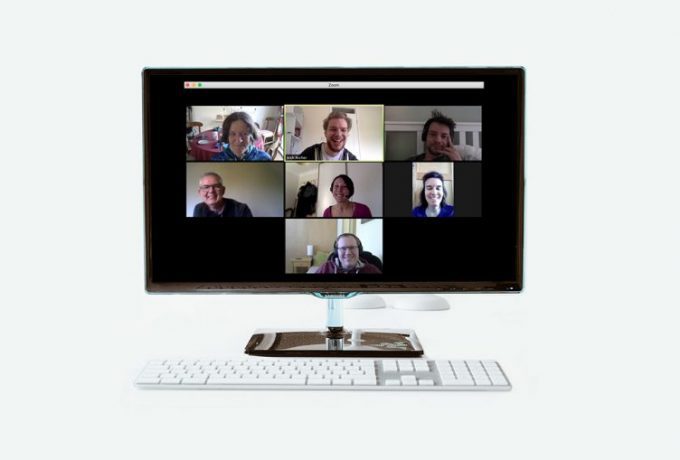Home Articles Web security & compliance Technologies to help your organisation work remotely
Technologies to help your organisation work remotely
Last updated June 2020
Given these unprecedented times, many of you may find yourself working at home. This isn’t always straight forward. There are plenty of tips to help get you into the working from home mind-set, but what tools do you need to enable your whole organisation to efficiently work from home?
Many free technologies are already helping people attend meetings and use important applications from home. It’s about finding the right ones for you.
Technologies that help home working
There are various technologies available which may help your staff to overcome barriers and work from home as normal. All Alberon staff are now using some on a day-to-day basis. They allow us to operate as normal.
Accessing files & servers
Challenge: Not being able to access your work files and servers.
Technological Solution: Using a Virtual Private Network (VPN) service to securely access another private network, such as your organisation’s servers.
What we use: OpenVPN is a reliable VPN that gives employees secure access to private networks, such as the ones you likely store your files on at work. It is important to keep as little work documentation and data on your personal computers as possible, as it poses a security risk. Installing and using VPN software to log into your workplace’s network from home, means you don’t save documents on your personal computer. They are kept centrally where all members of staff can access them. They are also backed up on the company’s server, ensuring no data is accidentally lost – which may be more likely on personal computers.
Meetings
Challenge: Not being able to attend meetings with colleagues, suppliers and clients.
Technology solution: A reliable and secure video conferencing software.
What we use: Zoom is a reliable, user-friendly tool for internal and external meetings. The free version works well for one-to-one meetings, but meetings with 3 or more people are capped at 40 minutes. Having a few premium accounts that you can share means you can have longer meetings with more people. Zoom features include the option of adding passwords, so only those invited can join a meeting, and the ability to record and share meetings with non-attendees.

Internal communications
Challenge: Not being able to contact your colleagues quickly and knowing their availability.
Technology solution: Internal instant messaging services.
What we use: Slack is a social platform that helps us to keep in touch with colleagues. It allows you to create groups, for departments or projects, as well as share any documents quickly and efficiently. It also serves as a platform from which to share non-work news and a bit of office banter!
Organisation
Challenge: Shared physical planning and organisational tools such as whiteboards or similar.
Technology solution: Organisational apps that enable you to organise projects and collaboration.
What we use: We use Trello as our primary organisational tool. It is a free web app that works like a notice board with post-it notes. It is a collaborative and simple tool that can organise all kinds of projects, which a whole team can access. There are many other free and paid tools available, but you just need to be careful of paying for functionality that you don’t actually need or will not use.
Collaboration
Challenge: Not being able to collaborate easily.
Technological solution: Shared calendars, documents.
What we use: G Suite may be something you already have access to if you have any Google accounts at work.
It offers the ability to have central calendars for individuals and shared ones for multiple people or the whole organisation. These can include meeting descriptions and agendas to help organise meetings as well as send push notifications so you don’t miss them. Staff can see when others are available and the calendars can be accessed from anywhere.
Google Drive allows you to create, edit, share and track versions of different types of documents, whilst backing them up to cloud storage. They enable you to work with word processing documents, spreadsheets and more. Not only can multiple people work on them at the same time, but with app versions available, they function on phones and tablets as well. They benefit from Google’s pioneering technological advances and it is free to use. When you share documents users have to be logged in to change them. This keeps them secure and allows you to see who has made changes.

What else could help?
Some of our clients have asked us to include chat facilities and social-media like forums on their websites. This allows for easier communication and reduces the amount of time spent on the phone to customers at home. Chat gives your customers confidence that their queries are being dealt with and not disappearing into a black hole.
Others require tailor-made solutions, which allow the workforce to be able to access and use software easily. This means making it readily available on all sized devices, so it can be used on laptops, phones and tablets alike.
It is also more important than ever to make sure your systems are secure. This may mean auditing your software and updating functionality that may risk data breaches. This is especially important if your workforce is accessing this data from home. For example, you don’t want them pulling off data and saving it onto their personal computers. Therefore, you may want a dashboard or area to display data directly on the system.
If they do have to save files locally, remind them to manage them properly. This may mean deleting them at the end of the day (or week) otherwise you will also fall foul of GDPR.
We are here to help
If you need help planning how your workforce can work from home efficiently or would like to find out more about your options, please get in touch, we are happy to help.